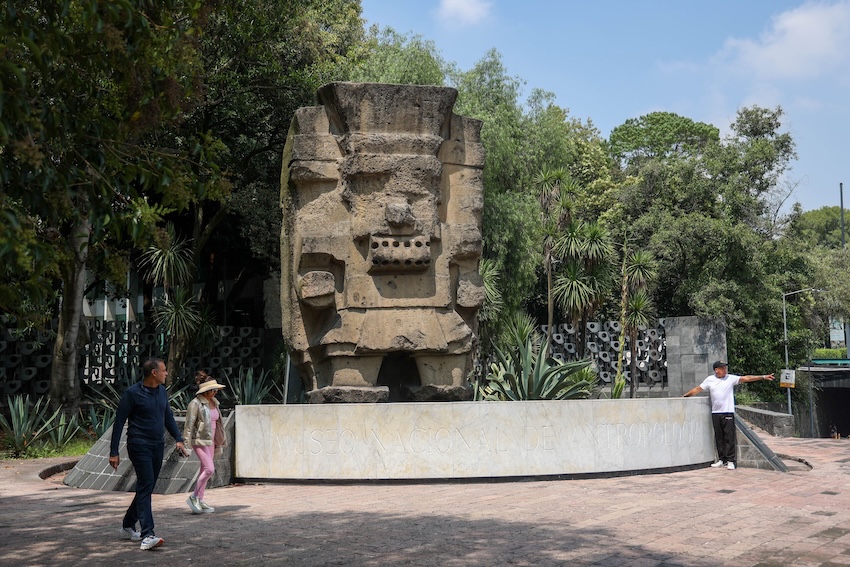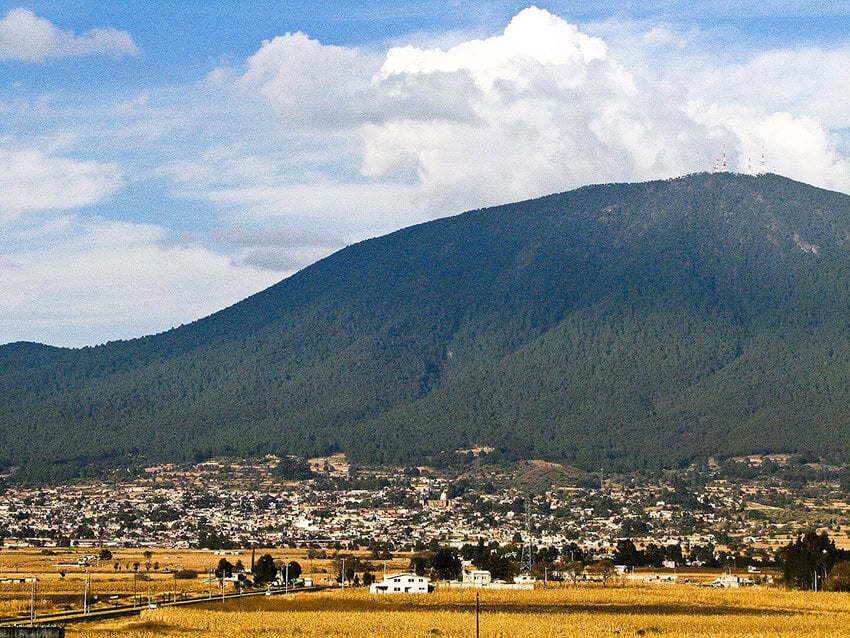In honor of World Statistics Day on Oct. 20, Mexico’s national statistics agency INEGI published a small book presenting the 99 facts you need to know about Mexico.
This week, we have shared the book’s contents translated into English. Check out the other installments for more curious, surprising and eye-opening statistics about Mexico:
81) In 2025, potholes and water leaks were the most frequently reported community problem in neighborhoods and localities, making up 53.3% of reports.
(Source: INEGI, National Survey of Victimization and Perceptions of Public Security – ENVIPE, 2025)
Infrastructure failures such as potholes in the streets and water supply leaks are consistently viewed as top concerns in urban and rural communities. These issues affect daily life, mobility, and public trust in local government, often ranking above crime or public safety in citizen surveys.
82) In 2024, there were 1,203 registered museums in Mexico — 10 more than in 2023.
(Source: INEGI, Museum Statistics – EM, 2023 & 2024)
Mexico’s museum network continues to grow, with art, history and archaeology as the most common themes. Major museums are concentrated in Mexico City, but every state maintains cultural venues. The rising number of museums reflects increasing investment in the arts, heritage and public education.

83) In Mexico, some town names are used repeatedly. The most common is San Antonio, found in 1,440 different locations across the country.
(Source: INEGI, Register of Continental, Insular and Submarine Geographic Names – RNG, 2025)
This widespread naming reflects Mexico’s colonial and religious heritage, with “San Antonio” appearing in towns, villages and smaller settlements throughout almost every state. Locality name repetition is common for saints and Spanish-rooted place names, underscoring the country’s deep geographical and cultural diversity.
84) In 2024, there were 818,000 registered deaths in Mexico: 44.0% were women, and 55.9% were men. In 0.1% of the cases, sex was unspecified.
(Source: INEGI, Registered Death Statistics – EDR, 2024)
Mortality statistics in Mexico continue to show a gender difference, with men consistently making up the majority of recorded deaths — even as life expectancy gaps persist. These patterns are shaped by age structure, occupational risks and differences in the leading causes of death for each sex.
85) In 2025, 61.2% of the population had attended at least one cultural event or performance in the previous year, including concerts, live music, exhibitions, movie screenings and theater plays.
(Source: INEGI, Module on Selected Cultural Events – MODECULT, 2025)
Cultural participation is on the rise, with movie showings, concerts and festivals as the most attended events in Mexico. Recovery in cultural attendance after the pandemic shows renewed interest in public events across age groups and regions, though participation rates remain lower for people with disabilities and Indigenous language speakers.
86) Between 2000 and 2020, the average number of occupants per dwelling in Mexico fell from 4.4 to 3.6 people.
(Source: INEGI, Population and Housing Censuses)
Household size in Mexico has steadily decreased, reflecting demographic changes like lower fertility rates, more nuclear families and increased urban living. This trend brings new challenges and opportunities for housing, city planning, and social services.
Post-AMLO, Mexican household income is up and inequality is slightly down
87) In 2020, 51.6% of Mexico’s population lived in localities with fewer than 100,000 inhabitants.
(Source: INEGI, Population and Housing Census – CPV, 2020)
Despite increasing urbanization, the majority of Mexicans continue to live in small and medium-sized towns and rural communities. These demographic patterns affect access to services, infrastructure and economic opportunities, with significant regional disparities.
88) In 2024, 72.3% of people in Mexico felt unsafe at ATM machines located in public areas.
(Source: INEGI, National Survey of Victimization and Perceptions of Public Security – ENVIPE, 2024)
Public ATM machines are perceived as the riskiest urban locations for crime and assault, with nearly three out of four adults reporting insecurity when using them. This perception remains higher than for public transport, parks or banks — and is even more pronounced among women and in larger cities.
89) Commuting to work often means crossing municipal boundaries in Mexico. In 2020, 14.4% of workers traveled between municipalities to reach their workplace.
(Source: INEGI, Population and Housing Census – CPV, 2020)
Intermunicipal commuting has grown in recent decades as metropolitan zones expand and jobs become more dispersed. This poses mobility challenges for urban planning, transport systems and local labor markets, increasing both travel times and demand for regional coordination.
90) In 2022, 24.5 million head of cattle were registered in Mexico.
(Source: INEGI, Agricultural Census – CA, 2022)
Mexico’s cattle inventory continues to grow, with bovines kept for meat, milk and hides across all regions. Just over half the country’s cattle are concentrated in eight states, led by Veracruz, Jalisco, Chihuahua and Chiapas — making cattle farming a major part of rural economies and food supply.
91) In 2020, Jocotitlán or Xocotépetl, in the state of México, was the active volcano with the greatest number of populated localities around it: 68 towns with 95,000 inhabitants.
(Sources: INEGI, Geology and Physiography – GEOL, 2024; INEGI, Geo-statistical Framework – MG, 2020; INEGI, Population and Housing Census – CPV, 2020)

Jocotitlán is notable both for its volcanic activity and its surrounding communities, making it the volcano with the largest concentration of settlements and residents in its vicinity. Monitoring and risk mitigation for these populations is a local priority, given the potential hazard and socioeconomic importance of the region.
92) In 2022, land dedicated to agriculture in Mexico exceeded 25 million hectares, an area slightly larger than the state of Chihuahua.
(Source: INEGI, Agricultural Census – CA, 2022)
Mexico’s agricultural land spans about 25.7 million hectares according to active productive units, placing it among the country’s largest categories of land use. The extent is comparable to the total area of Chihuahua, highlighting the importance and scale of farming activities in national territory.
93) In 2020, there were 7,364,645 people aged 3 and over in Mexico who spoke an Indigenous language.
(Source: INEGI, Population and Housing Census – CPV, 2020)
Mexico’s linguistic diversity remains significant: These speakers made up about 6.1% of the national population over age 3. The majority live in rural municipalities in the south and southeast, with Oaxaca, Chiapas and Yucatán among the states with the highest shares of Indigenous language speakers.
94) During 2024, there was an average of 1,027 traffic accidents per day in urban and suburban areas of Mexico.
(Source: INEGI, Land Transit Accidents in Urban and Suburban Areas – ATUS, 2024)
According to INEGI’s annual reporting, traffic crash frequency in urban settings remains a major public safety challenge. With over 374,000 accidents recorded for the year, the daily average underscores ongoing issues in road safety, enforcement and urban mobility nationwide.
95) Between April and June 2025, 16.4 million people worked independently in Mexico.
(Source: INEGI, National Survey of Occupation and Employment – ENOE, second quarter 2025)
Independent work — including self-employment, freelancing and those with small businesses — remains a crucial part of Mexico’s labor market. This segment represents over one-quarter of all employed people, and trends in independent work reflect changes in entrepreneurship, informal labor and economic resilience.
96) Meteorological phenomena such as tornadoes are also recorded in Mexico. In 2022, civil protection units attended 66 such reports.
(Sources: INEGI, National Census of Municipal Governments and Territorial Demarcations of Mexico City – CNGMD, 2023; INEGI, National Census of State Governments – CNGE, 2023)
Tornadoes, while infrequent compared to other natural hazards, are documented each year — mostly in northern and eastern states. Civil Protection authorities respond to all tornado reports with emergency management and risk mitigation efforts as part of broader disaster response and community support actions.
97) Of the 6.9 million people who live in a different municipality, state or country now than they did in March 2015, 2.5 million migrated to reunite with family.
(Source: INEGI, Population and Housing Census – CPV, 2020)
Family reunification remains the main reason for internal migration in Mexico, accounting for about 37.5% of all cases between 2015 and 2020. Migration for work is the next most common driver, but family ties are the central force shaping mobility patterns — particularly for women.
98) At the end of 2022, there were 2,458 mayors and municipal presidents in Mexico: 77.0% were men and 22.9% were women.
(Source: INEGI, National Census of Municipal Governments and Territorial Demarcations of Mexico City – CNGMD, 2023)
Men continue to dominate political leadership roles in local governments, with women holding less than a quarter of mayoral or municipal president positions nationwide. Although representation has improved compared to previous decades, progress slowed in 2022, highlighting persistent barriers to gender equity in political participation.
99) In 2023, seven out of every 100 inhabited households in Mexico did not have a kitchen.
(Source: INEGI, National Survey of Demographic Dynamics – ENADID, 2023)
By 2023, 93.3% of Mexican homes had a dedicated kitchen space, marking an improvement from previous years, but about 2.5 million homes still lacked this amenity. The absence of a kitchen is more common in rural, marginalized and low-income regions, which signals ongoing disparities in housing quality and access to basic infrastructure.
Mexico News Daily
